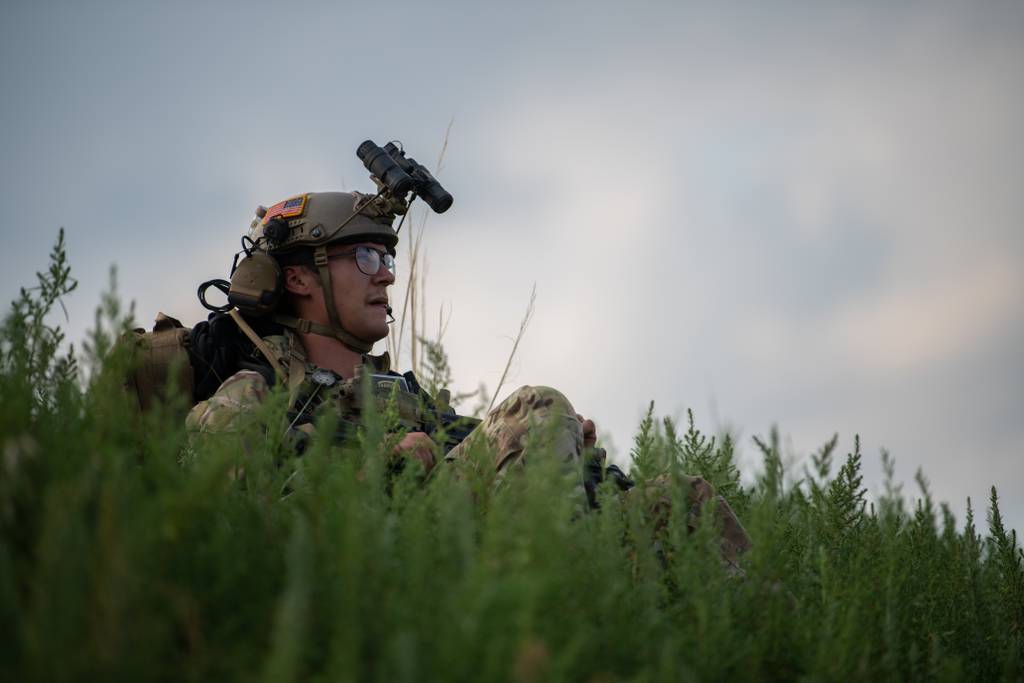WASHINGTON — Officials involved with the realization of Joint All-Domain Command and Control, the Pentagon’s campaign to connect everything, everywhere, all at once, have developed metrics to gauge what works and what doesn’t amid pressure from Congress to show results.
“There’s some very specific terms, very specific measures, that we can look at to see whether we’re moving the needle,” Brig. Gen. Jeffery Valenzia, the U.S. Air Force Advanced Battle Management System Cross-Functional Team lead, said Nov. 16 at a C4ISRNET event.
The benchmarks include data on how technologies speed or slow decision making, how many errors are introduced, the variance among available options and potential weak spots or pitfalls.
“We can look at variance. What happens with a very low-skill battle manager as opposed to a high-skill battle manager within the same operational scenario? Can I develop tools that help us to level that out?” Valenzia said. “We can look at vulnerabilities. If I’m creating a kill chain that’s dependent upon a single node that’s highly vulnerable to either kinetic or non-kinetic suppression, well, then I’ve created a fragility in the system.”
Put simply, he said, it’s all about “performance delivery.”
RELATED

Valenzia’s remarks come as some analysts express concerns about JADC2 alignment among the services and lawmakers seek clarity on overall progress and price. The brigadier general dismissed the idea that the Army, Air Force and Navy aren’t closely collaborating on the effort, calling it a “convenient argument that’s not reflective of what’s really happening.”
An early version of the annual defense bill included a review of JADC2 implementation, with staff saying the provision is not meant to be punitive, but rather guide the application of future resources. The legislation has yet to clear the House and Senate.
The military services each have their own contributions to JADC2, which aims to seamlessly link forces and databases across land, air sea, space and cyber. The Army has Project Convergence. The Navy has Project Overmatch. And the Air Force has the Advanced Battle Management System, which Valenzia is intimately involved with.
“JADC2 is about war fighting. It’s really about combined arms. It is an age old problem, really approaching it in a unique manner,” Valenzia said at the C4ISRNET event. “The methodology that we’re going after is taking advantage of the fact that we have information systems that can connect us in ways of which are really unique to this time. And because of that, we have the ability to share insights, knowledge, across the battlefield.”
The Air Force in September selected five companies to aid its development of ABMS, as the service’s secretary, Frank Kendall, acknowledged efforts to modernize command and control systems are more challenging than expected.
L3Harris Technologies, Leidos, Northrop Grumman, Raytheon Technologies and Science Applications International Corporation, together known as the the ABMS Digital Infrastructure Consortium, will work on secure processing, resilient communications, open-ended designs and other digital challenges to JADC2.
The five are all among the 40 largest global defense firms ranked by revenue, totaling some $100 billion earned in 2021, according to a Defense News analysis.
“The rationale behind it is a consortium-based approach, which is not to go to a single vendor who develops a solution set that sometimes comes with some restrictions on how you can scale it in the future,” Valenzia said. “Instead, it’s to take these high-performing companies — who have the resident expertise in the complexity of what we’re trying to do — to drive a collaborative, transparent infrastructure approach, so that we not only can deliver the warfighting capability today, but we can scale it into the future.”
Colin Demarest is a reporter at C4ISRNET, where he covers military networks, cyber and IT. Colin previously covered the Department of Energy and its National Nuclear Security Administration — namely Cold War cleanup and nuclear weapons development — for a daily newspaper in South Carolina. Colin is also an award-winning photographer.








